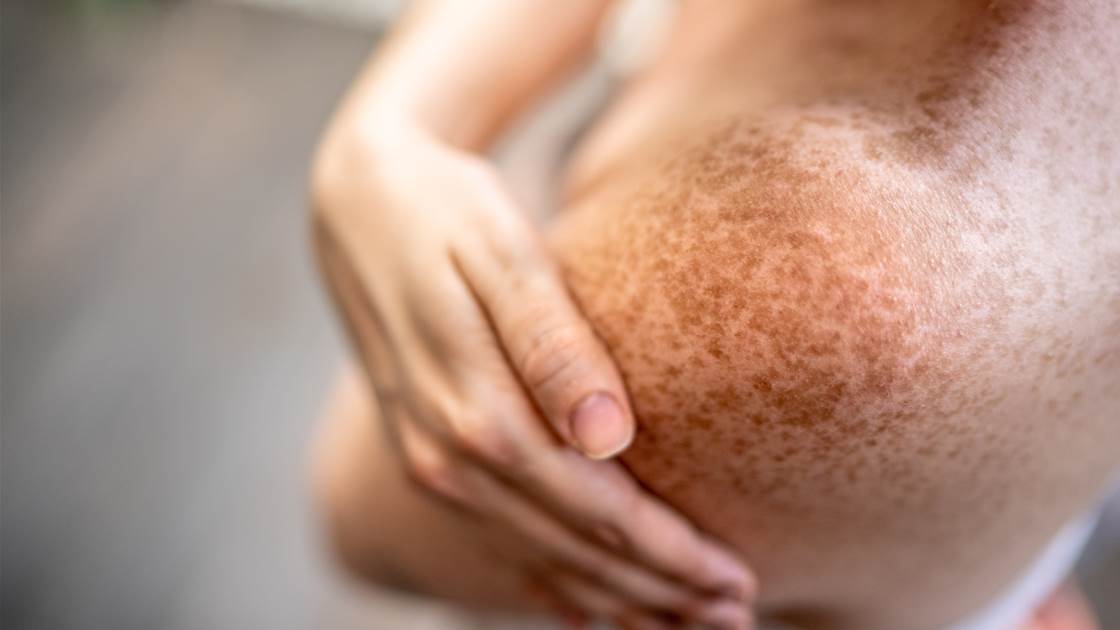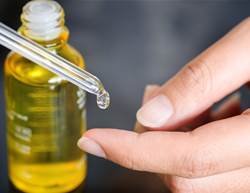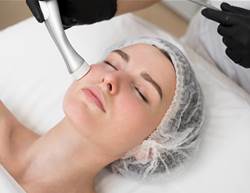Besides being famous, what do Julianne Moore, Meghan Markle and Emma Stone have in common? A face full of freckles, or “angel kisses,” as Grandma may have called them. Like snowflakes, no two freckles are exactly alike and they tend to appear in sun-exposed areas like the nose, cheeks and shoulders. While completely normal, some people are more genetically prone to them than others.
Below, experts break down what freckles are, who gets them and how to fade them if that’s your goal
What causes freckles?
“People are not born with freckles,” says board-certified dermatologist Dr Asmi Berry. Scientifically called ephelides, freckles are small pigment spots triggered by sun exposure, Dr Berry explains. They form when melanocytes—pigment-producing cells in the skin—create melanin as a natural defence against ultraviolet (UV) damage.
A person’s likelihood of developing freckles is largely influenced by genetics, specifically a variation of the MC1R gene, which determines melanin distribution. “While fair-skinned individuals with red or light brown hair are more likely to have this gene variation, people of mixed heritage or those with lighter brown or golden undertones may also inherit a tendency for freckles,” explains nurse practitioner Natasha L. Copelin.
Other factors, including hormonal changes from pregnancy, birth control or hormone replacement therapy, can also make freckles darker or more prominent, Dr Berry says. Additionally, certain medications such as antibiotics or topical retinoids can increase skin sensitivity to sunlight, making freckles more noticeable.
Freckles vs sun spots or age spots
Age spots or sun spots, also known as lentigines, are often mistaken for freckles, says Dr Berry. “The main difference is that freckles are a temporary increase in melanin production, while lentigines involve an increase in melanocytes, the melanin-producing cells,” she explains. Another way to tell them apart is that freckles tend to fade when you stay out of the sun, while age spots do not.
Freckles vs moles
Freckles and common moles share similarities, but they are not the same. A mole is essentially a cluster of pigment and can be thicker, appearing more like a growth. Most adults have between 10 and 40 moles. While common moles are not cancerous, people with a high number of moles may have a greater risk of developing melanoma.
You should see a doctor if a mole develops any of the following symptoms:
- Changes in colour
- Uneven growth in size
- Alterations in shape, texture or height
- Dry or scaly surface
- Hard or lumpy texture
- Itchiness
- Bleeding or oozing
How to treat freckles
“Freckles tend to darken in summer, when people are in the sun more often and fade in winter,” says Dr Berry. If you are looking to reduce the appearance of freckles, they may naturally become lighter over time. In darker skin tones, freckles may be less noticeable due to the skin’s natural melanin acting as a protective shield, adds Copelin.
Sun protection is the best defence against new freckles forming. “This means wearing SPF 30+ sunscreen daily, reapplying it every two hours and wearing a hat and sunglasses,” says Dr Berry. “Tinted sunscreens that contain iron oxides also help protect against visible light, which can increase pigmentation.”
Certain skincare and dermatology treatments, including vitamin C, retinoids, niacinamide and laser treatments, may help fade freckles. However, Dr Berry warns, “They can return with sun exposure.”










